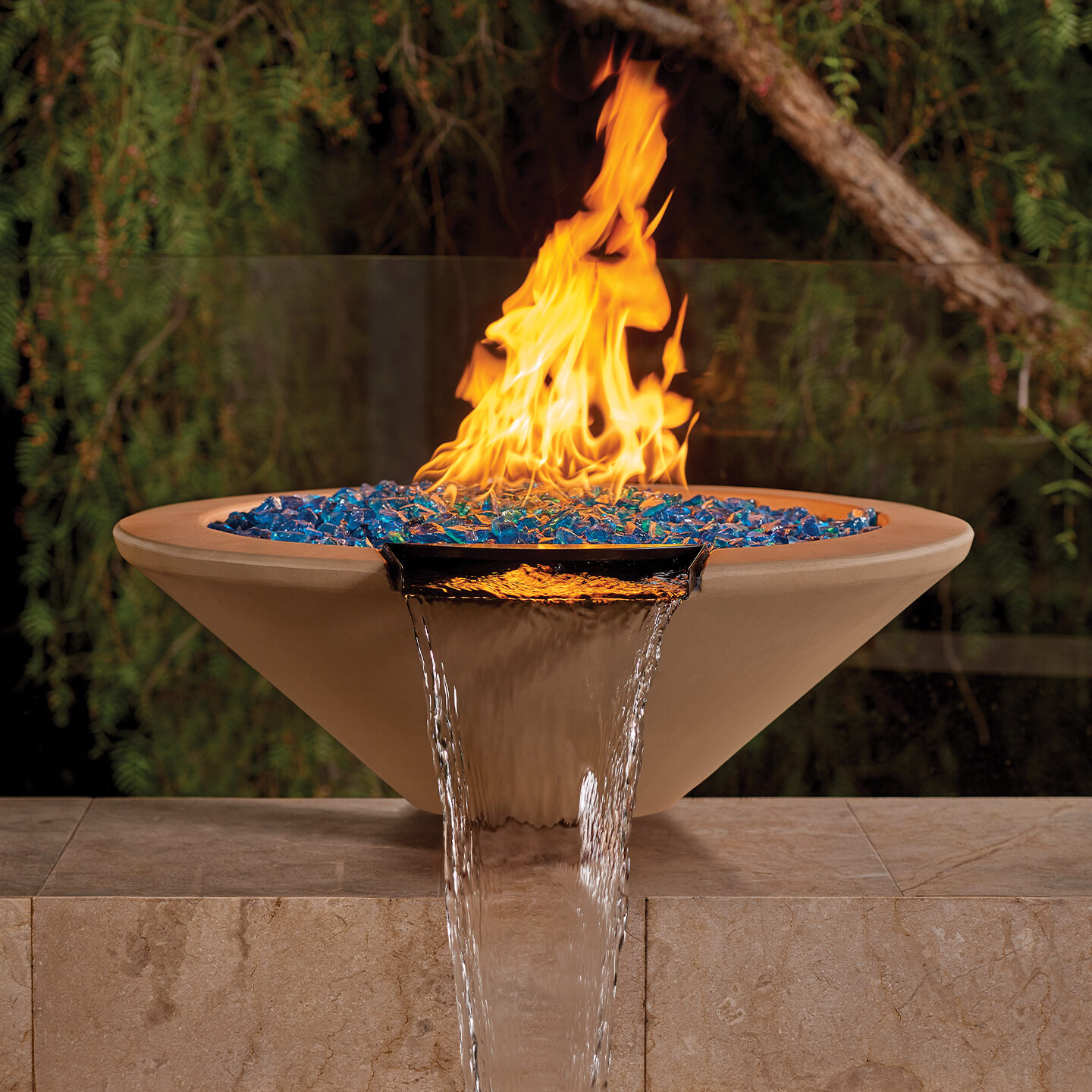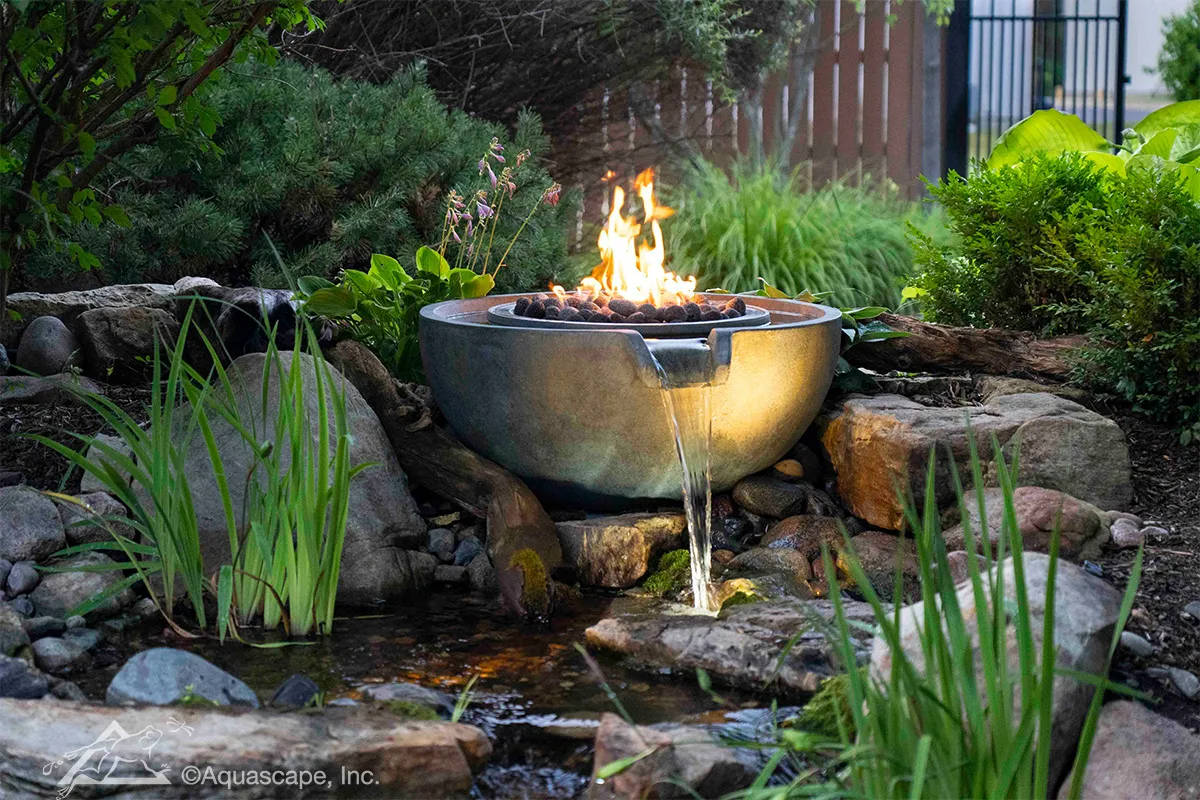Call us at 725-239-9966!
M-F: 8 AM-7 PM PST
Call us at 725-239-9966!
M-F: 8 AM-7 PM PST

Swimming pool fire bowls are a popular type of outdoor fire feature that offers ambient lighting and warmth. But with their open flames and embers, many homeowners wonder if fire bowls can be safely placed on wooden decks.
This comprehensive guide will cover everything you need to know, including fire codes, manufacturer guidelines, material considerations, and proper safety precautions for using a fire bowl on your deck.
Fire codes likely prohibit placing fire bowls directly on wood decks due to extreme fire hazards from heat and spark igniting the flammable wood.
Use a protective non-flammable base like concrete pavers or a metal stand as a heat buffer if determined to incorporate a fire bowl adjacent to a wood deck.
Adhere to safety tips like having fire extinguishers nearby and never leaving a lit fire bowl unattended, even for a minute.
Position fire bowls at least 10-25 feet away from any buildings, trees, fences or other structures to prevent fire spread.

Putting fire bowls directly on top of wood decks is an extreme fire hazard and safety risk. The intense heat can quickly ignite the deck wood and flaming embers may smolder undetected. Most manufacturers and fire codes prohibit placing fire pits directly on deck planking due to extreme heat hazards and fire risks.
However, if your only outdoor space is your wood deck, take precautions like using a protective base and always attending the fire. Or opt for a safer fire-free alternative.
By understanding the risks and following proper safety measures, you can safely enjoy fire bowls in areas adjacent to your beautiful new deck.
Constructed of highly flammable wood, decks can be easily damaged by a fire bowl's heat and sparks. Specific concerns include:
For these reasons, fire officials and manufacturers have guidelines about placing fire bowls on decks.
Local municipalities and counties dictate fire codes for recreational fires. These codes specify where fire bowls can be positioned to maintain safety.
Typical fire bowl regulations require:
Some regions may prohibit placing fire bowls directly on composite or wood decks altogether. Be sure to check with your local fire marshal's office first.

Aside from codes and manufacturing directives, several deck construction considerations factor into fire bowl placement:
Some wood species, like cedar and redwood, have more natural resistance to fire than pine. But no wood is immune to ignition over prolonged heat exposure.
Newer, fire-retardant-treated decking lumber has a better flame spread index. But it still requires a protective buffer from fire bowls.
Enclosed decks block airflow, causing smoke and heat to be trapped. For fire bowls, open-design decks are best.
In summary, municipalities prohibit or strongly discourage placing fire bowls directly on wood decks. You should always adhere to the manufacturer's recommendations too.
But if determined to mount your fire bowl on a deck, special precautions are essential for safety.
While general guidance warns against putting fire bowls on decks, you can take measures to reduce the fire risks if a deck is your only outdoor living area. Here are some tips:
Never place a fire pit bowl directly on a wood deck. The intense heat can char the boards, decking fasteners, and structural framework.
Instead, use a non-flammable base as a buffer between the fire pit and the deck. Good options include:
Be sure the base adequately supports the fire bowl’s total weight when loaded with wood and fire.
In addition to fire code protocols, always adhere to standard safety tips for recreational fires:
Exercising caution with an outdoor fire is paramount for preventing accidents and unintended structural fires.

If still uncertain about placing a fire bowl on your deck, safer alternatives exist. These options carry lower fire risks while still allowing you to enjoy the ambiance of an outdoor fire. Before deciding, be sure to consult our comprehensive water and fire bowl buying guide covering all the different types of fire bowls and important considerations when making your purchase.
Self-contained units with fire-resistant surrounds and bases can situate the fire safely away from combustibles. Tend the fire while relaxing in patio chairs nearby.
Compact fire pits designed for use on sturdy, non-flammable table tops position the fire at a convenient level while containing sparks and embers.
Instead of burning wood, gas fire bowls use propane or natural gas, removing concerns over stray embers igniting debris. No ashes or smoke are produced either.
Flame-effect electric fireplaces mimic the look of real fireplaces without any safety considerations. Place them anywhere since no actual fire is present.

In short, fire bowls should not be placed directly on wood decks due to extreme fire hazards. The intense heat and sparks can ignite the decking, and codes prohibit open flames on combustible surfaces. However, with proper precautions, you can safely incorporate fire features adjacent to, but not on top of, wood decking.
Always make sure you have a fire extinguisher within easy reach. You should have a pitcher full of water nearby in case the fire gets out of control. Avoid using highly flammable materials like lighter fluid and old newspapers to light the fire. You might also need to avoid lighting a fire in windy conditions when embers and sparks can be easily blown around.
When considering a fire bowl for a wooden deck, you should consider one that comes with a fire bowl pad which offers an additional layer of protection between the fire bowl and the wooden deck. A fire water bowl that has a spark screen is also advisable as it helps contain embers and sparks. It’s also best to choose a fire pit bowl that is not too large and offers a controlled fire experience.
This needs to be addressed immediately by using a fire extinguisher or a pitcher full of water. Any remaining ashes should be carefully swept up and disposed of to prevent any potential fire hazards from lurking embers.
Composite decking is made from wood fibers and plastic, it can withstand a certain amount of heat, but it is not highly resistant to fire compared to natural stone or concrete. Therefore, it’s best to use a fire-resistant pad or base under the fire pit bowl to protect the composite deck from extreme heat.
Yes, windy conditions can be a risk factor. Wind can blow embers and sparks out of the pit onto the wooden deck, which could lead to a fire. If you are going to use your fire pit bowl in windy conditions, be sure to take extra precautions, such as using a spark screen and placing windbreaks around the fire pit.
Not all types of fire pit bowls can be used on wooden decks. Wood-burning fire pits bowls produce sparks and embers that can land on the wooden deck, which may lead to unwanted fires. If you want to use a fire pit bowl on your wooden deck, consider choosing a propane or natural gas fire pit bowl which does not produce errant sparks or embers and is quicker to control.

{"one"=>"Select 2 or 3 items to compare", "other"=>"{{ count }} of 3 items selected"}